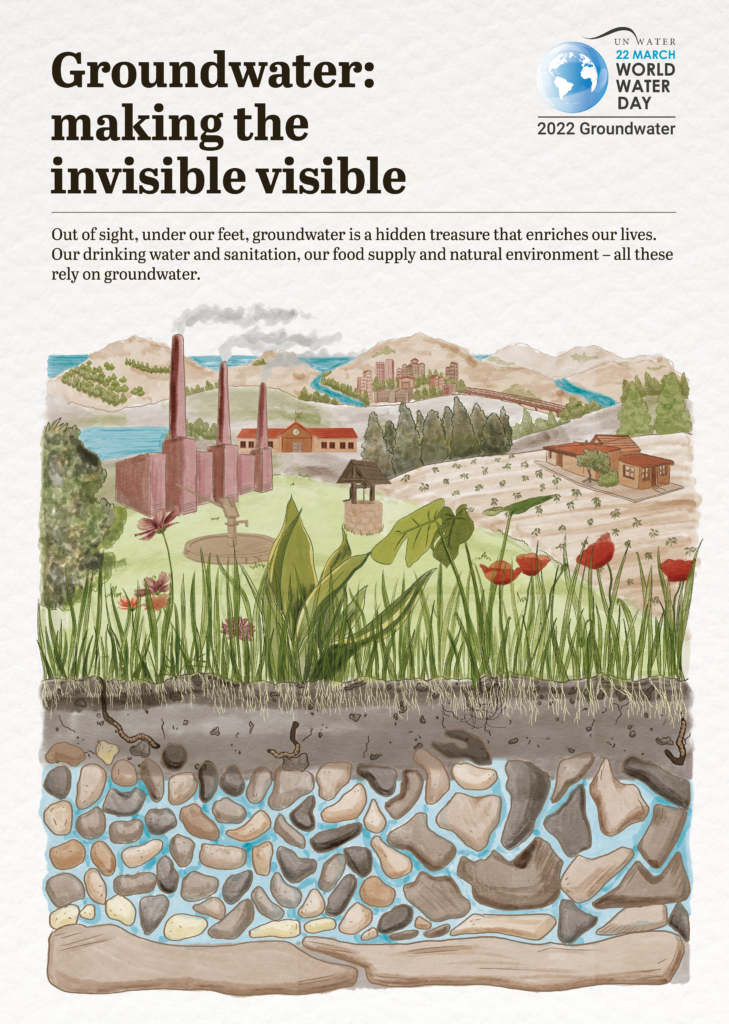World Water Day 2022
World Water Day is held on the 22nd of March every year and is an annual United Nations Observance, started in 1993, that focuses on the importance of water. This year the theme is:
Groundwater – Making the Invisible Visible

When we talk about water, especially in urban environments we usually focus on surface water – lakes, rivers and the ocean. But hidden away and out-of-sight is a major player in the water cycle. Almost all of the liquid freshwater on the planet is groundwater!
Groundwater is water found underground in aquifers, which are geological formations of rocks, sands and gravels that hold substantial quantities of water. Groundwater feeds springs, rivers, lakes and wetlands, and seeps into oceans. Groundwater is recharged mainly from rain infiltrating the ground. Groundwater can be extracted to the surface by pumps and wells.
In Perth one of our largest water resources is the Gnangara groundwater system, which is a perfect case study of the importance of groundwater aquifers. From the Department of Water and Environment Regulation’s Draft Gnangara Groundwater Allocation Plan:
“Climate change has caused average annual rainfall to decline 15 per cent since 1975 (Perth Airport rainfall station). This decline, combined with groundwater abstraction, has lowered groundwater levels across the Gnangara groundwater system. As a result, the health of groundwater-dependant wetlands and vegetation is suffering, groundwater quality is reducing in some areas, and the long-term sustainability of the resource is under threat.
The Gnangara groundwater system’s wetlands are drying. Lower groundwater levels have caused the drying of cave pools and wetlands in Yanchep National Park, such as Crystal Cave, Loch McNess (Wagardu) and Lake Wilgarup. Lower levels have also contributed to the loss of the unique invertebrate communities in the cave pools. Further to the south, lower groundwater levels have caused visible drying and health declines in wetlands such as lakes Nowergup, Gnangara, Mariginiup and Jandabup.”
The objective Draft Gnangara Groundwater Allocation Plan is to protect the Gnangara system from further impacts by narrowing the gap between groundwater abstraction, and reduced rainfall and recharge projected under climate change. The current draft includes a 10% reduction for most licence holders from the 1st of July 2028.
WaterAid have also released a report to commemorate this year’s World Water Day. In collaboration with the British Geological Survey (BGS) the report shows that there is enough groundwater under the continent of Africa for most countries to survive at least five years of drought – and some, more than 50 years!
